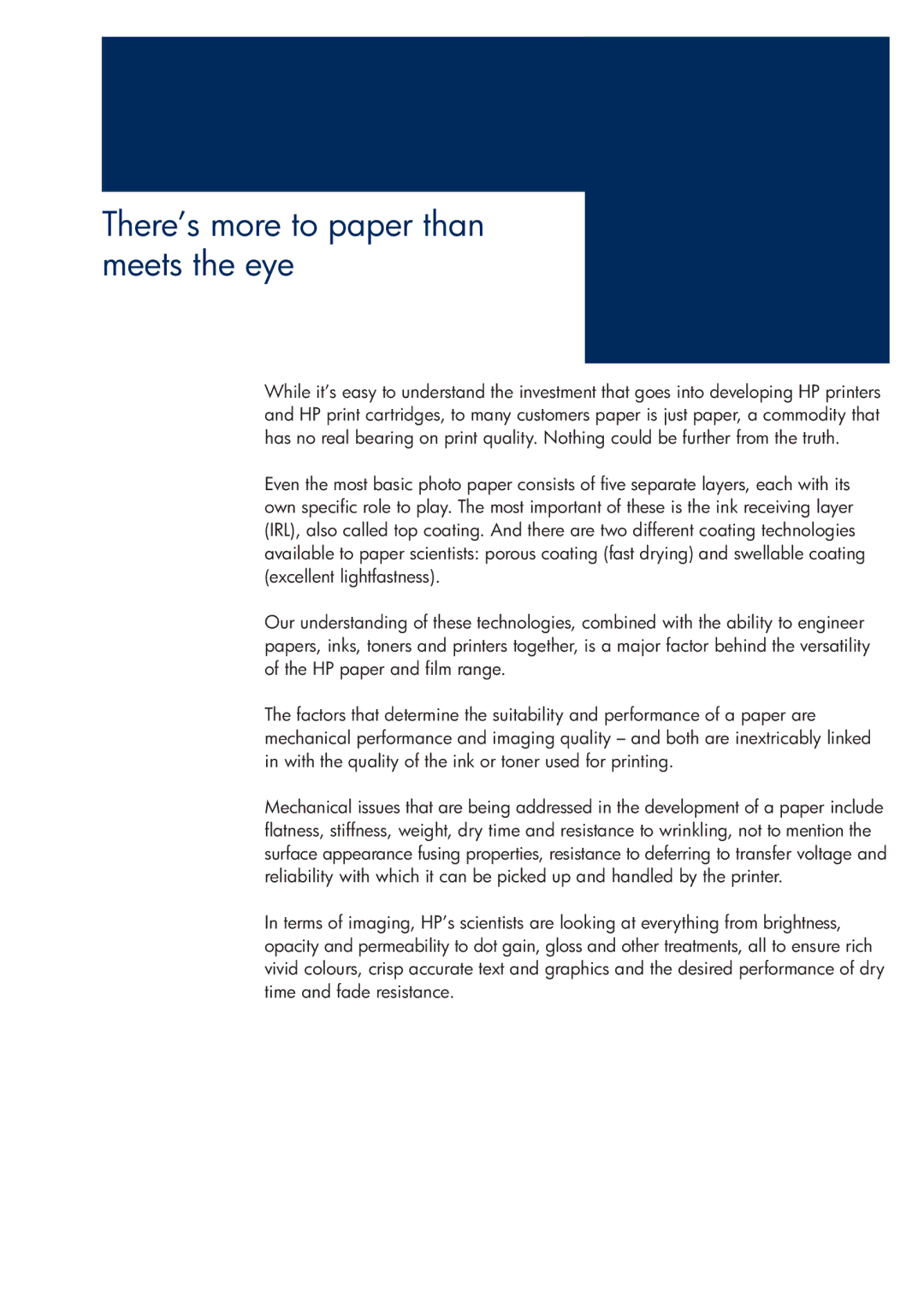
There’s more to paper than meets the eye
While it’s easy to understand the investment that goes into developing HP printers and HP print cartridges, to many customers paper is just paper, a commodity that has no real bearing on print quality. Nothing could be further from the truth.
Even the most basic photo paper consists of five separate layers, each with its own specific role to play. The most important of these is the ink receiving layer (IRL), also called top coating. And there are two different coating technologies available to paper scientists: porous coating (fast drying) and swellable coating (excellent lightfastness).
Our understanding of these technologies, combined with the ability to engineer papers, inks, toners and printers together, is a major factor behind the versatility of the HP paper and film range.
The factors that determine the suitability and performance of a paper are mechanical performance and imaging quality – and both are inextricably linked in with the quality of the ink or toner used for printing.
Mechanical issues that are being addressed in the development of a paper include flatness, stiffness, weight, dry time and resistance to wrinkling, not to mention the surface appearance fusing properties, resistance to deferring to transfer voltage and reliability with which it can be picked up and handled by the printer.
In terms of imaging, HP’s scientists are looking at everything from brightness, opacity and permeability to dot gain, gloss and other treatments, all to ensure rich vivid colours, crisp accurate text and graphics and the desired performance of dry time and fade resistance.
